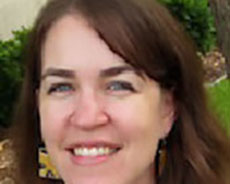
In recent years, Los Angeles has invested mightily in its public spaces in efforts to create a “world class city.” From the loudly-hyped debut of Grand Park, to Mayor Eric Garcetti’s Great Streets Initiative, to the pop-up parklets and plazas being created along the L.A. River and all around the city, a certain energy around a revitalized public sphere pervades the air. Much has been made of the design element of this revitalization, which is crucial, but little has been said of its legal architecture: the hundreds of municipal codes that regulate the city’s public spaces, often in exclusionary ways.
Here are some examples from Section 63.44 of the L.A. Municipal Code, which regulates the city’s parks and recreational facilities: No alcohol or open flame barbeques; no vending of commercial merchandise; no use of “sound amplifying systems;” no posting of bills; no blocking sidewalks; no swimming, bathing, or wading in waters (except beaches); no camping or lodging, including the assembly of a tent or other shelter with more than two sides; no sleeping on the beach at any time (really?). All parks are closed from 10:30 p.m. to 5:00 a.m. (except beaches, which close at midnight).
There are many more.
Policies like these are often justified in the name of “public safety,” but in fact they are about creating perceptions of a clean, orderly city that will attract the “right” kind of people. Many date to the 1960s and ’70s, when political protest in public space was at its height and the decline of central cities was becoming readily apparent, most obviously through dramatic increases in homeless populations. In order to lure suburbanites, businesspeople and tourists back downtown, L.A. and other cities passed a slew of restrictions on public spaces. The goal was to reinvent them as comfortable, orderly sites of leisure and recreation, not political protest, and definitely not sleeping or camping by poor people. These efforts have been somewhat successful in meeting their goals – witness the resurgence of downtown L.A. in recent years. But they come with significant costs that should concern all of us.
First, these restrictions have had pernicious effects on a broad range of people who don’t have reliable access to private space. While homeless people are the obvious targets, a host of others have also been affected: renters living in crowded apartments, teenagers chafing against parental authority, and gays and lesbians who aren’t out, among others. These folks are disproportionate users of public space because they have few alternatives, but excluding them by targeting their behaviors does nothing to address the reasons they are there in the first place and instead just makes their lives harder.
But there are other reasons to care about public space exclusions that go far beyond the needs of socially vulnerable groups. Restrictive policies erode the vibrancy of our public sphere – the eclectic mix of people and activities that makes parks and plazas in other parts of the world, such as Europe and Latin America, far more pleasant and interesting. One of the attractions of spending time in a well-used but lightly regulated public space is the possibility of stumbling upon, or being confronted by, a person or idea you were not expecting, whether that’s a street vendor selling an unfamiliar food, an especially talented skateboarder, or a political protester you disagree with.
Most importantly of all, restrictions on public space eat away at the health of our democracy. A truly democratic society requires a generous and inclusive public sphere in which the risk of disorder and personal discomfort is tolerated so that a greater public good can be achieved. From this perspective, it is crucial that the most vulnerable members of our society continue to have access to public space and to be visible, even if – especially if – their presence makes others uncomfortable. If ordinary citizens don’t see the realities of urban life in all its troubling complexity, they won’t have any idea how bad inequality really is, and they won’t be moved to do anything about it. This is how democracy works, or should work: through the everyday encounters with difference and inequality that make urban life challenging, to be sure, but also profoundly rewarding.
Article can be read at: Los Angeles Times
